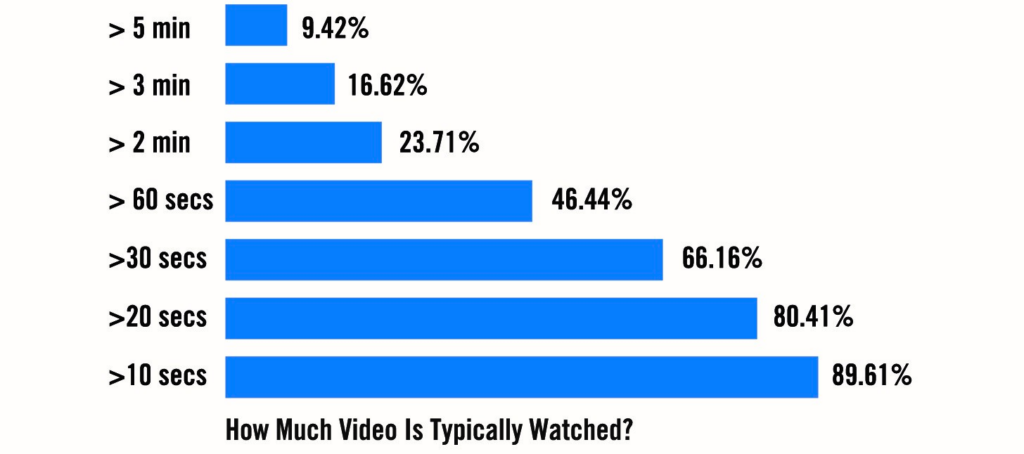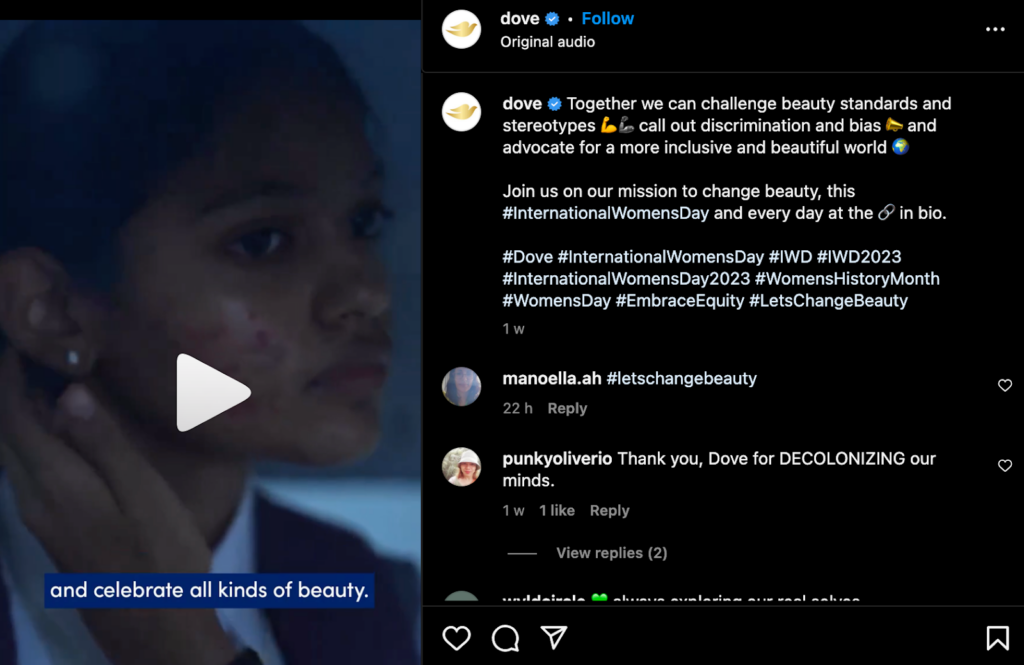As TikTok snippets, Instagram Reels and YouTube Shorts continue to dominate the social media scene, they all have one thing in common. Video content. With over 86% of all advertisers now turning to a video medium to share campaigns and grip consumer attention, visual content has become a key player in any successful marketing strategy.
Video content has become one of the most engaging ways to connect with your consumer. Whether you’re promoting products or showcasing your brand values, posting videos boost social engagement, encouraging viewers to share and respond.
A whopping three-quarters of marketers claim that utilising video content has had a direct impact on their business success. The question is, with so many brands to compete against, how can you make sure your video content stands out?
From adaptability to accessibility, your video content strategy must be polished if you want to see success on social media. Stick with us as we share five tips on video content creation that’ll have your social feeds filling up with followers.
1. Have a plan
Like in any marketing strategy, it’s essential to create a plan before embarking on a new content adventure. While creating and posting videos has become second nature to those of us in a digitally native generation, it’s important to ensure that the content you post will be popular amongst your viewers. Using a video trim tool can help refine your content, keeping it concise and engaging for maximum impact.
If you’re new to video content creation, taking a step back to plan out content formats, topics, and storylines will set you on a secure path to victory. It will be great to use a video editor tool for you to be able to create high-quality videos. With this tool, you can enhance the quality of our video by leveraging other features such as audio editor, MP3 Converter, audio joiner and many more.
A successful content plan should start with research. The key here is to head on to popular platforms such as TikTok and Instagram as a consumer first. After searching for brand-relevant content categories, start collecting information relating to audience trends, viral sounds, skits and the types of engagement each video in your niche is receiving.
With a broader view of your competition, it’s then time to create a plan that encapsulates content trends yet adds a new, brand-specific spin on popular viral formats.
At this stage, try to set goals for your video content. Do you want to improve your brand awareness, or are you trying to sell a specific product or service? These goals should influence the direction you take with your content strategy and help streamline your success.

(Image Source: Sprout Social)
Last but not least, make sure your content goals fall into a natural marketing funnel. In the same way, as you would when you create your own website, using the format of the natural buyer journey could influence how you produce your content. If you formulate your plan according to the structure of a consumer funnel, your videos will be more likely to reach new customers, generate demand and inspire evangelism in the same way as any successful campaign.
2. Make it sharable
A victorious video campaign is one that is focused on engagement. If you’re aiming to increase your brand awareness, your content should encourage conversation and be easy to share across a number of social channels.
Creating a sharable video starts with knowing your target audience inside and out. The key here is to learn about the type of content formats that they are likely to share and incorporate those into your own strategy.
Another way to improve shareability is to jump on viral trends. On TikTok in particular, one of the easiest ways to get your video to the top of the For You Page is to adopt trending sounds, skits and dances into your content strategy while still incorporating your brand.
Take Ryanair, for example. The airline company with over 2 million TikTok followers are known for their funny skits and takes on viral video trends.

(Image Source: Ryanair on TikTok)
Using trending hashtags and shareable formats to their advantage, they quickly rake in engagement on each video. If you want to follow in their footsteps, make sure that your content is exciting, creative and worthy of sharing.
3. Hook your viewers in seconds
Did you know that over half of all viewers will click off of a video in less than 60 seconds?

(Image Source: Content Marketing Institute)
If you want your content to be successful with your viewers, your videos should be short, snappy and straight to the point.
On the back of TikTok’s viral 15-second video format, studies show that consumers can lose concentration in as little as 8 seconds. That’s why you need to hook your targets right off the bat. Those first few seconds are crucial and can be the difference between a consumer engaging with a video or scrolling past.
Why not start off a video with a thought-provoking question or a powerful visual that leaves viewers wanting more? At this stage, it is also important to include brand-specific flags, such as your logo, tagline or the product/service you’re promoting. Giving your viewers a chance to recognize one of their favourite brands instantly could encourage them to stick around.
Hinge is a great example of a brand that knows how to hook its viewers in seconds. In their ‘Designed To Be Deleted’ video, the audience is quickly hooked as they follow the narrative of a small ‘Hinge’ creature that continues to be wounded as couples get closer.

(Image Source: Hinge on YouTube)
From start to finish, you constantly see the Hinge logo as you flash through a quick, 30-second video. The video then finishes, sporting Hinge’s viral tagline – “The dating app designed to be deleted”, making it easy to recognise and act on.

(Image Source: Hinge on YouTube)
In fact, on the back of the YouTube campaign alone, app downloads increased by 45%, proving that an imaginative narrative and strong brand placement pay off when aiming to hook a consumer.
4. Make your video accessible
Social media platforms serve a global audience. Therefore, your videos must be accessible to anyone who could stumble across your brand. From language barriers to disabilities, there are a number of factors you should consider when creating your video content.
In order to serve a diverse demographic, ensure that your videos contain subtitles, clear calls to action and accessible visual elements for those with vision impairment, photosensitive epilepsy and attention deficit disorders.
Creating more inclusive content increases your chances of engagement with a wide viewership. Prioritising accessibility also says a lot about your brand values too. If your social content is inclusive, consumers will be more willing to trust your products and services.
Dove presents a great example of video content accessibility. Not only do they promote inclusive beauty, but each of their Instagram Reels contains subtitles, making their content available for all.

(Image Source: Dove on Instagram)
Taking time to make your content easy to consume is a great way to ensure that it’ll reach all potential targets.
5. Pick the right platform
Every major social channel has its own viral video format that marketers should follow if they want their brand to be engaged with.
The key here is to create adaptable content that can be customised to each and every platform. For example, if you create a minute-long reel video on Instagram, make sure you only post a 15-30 second snippet of it on TikTok for maximum sharability. Or, if you’re shooting a piece of content for your social platforms, make sure your video is in portrait mode for TikTok and landscape for a longer YouTube video.
Taking the time to customise your content depending on the platform will boost your chances of success. If your video does not follow the format of your desired social platform, the algorithm is less likely to pick it up, and your content is unlikely to be seen.
While it is important to be active on numerous social platforms, it’s also paramount to pick the right platform for your content campaign. Think about factors such as demographic age, attention span and the types of products/services you’re promoting.
If you’re speaking directly to a younger generation, TikTok could be the best platform to target, with a 15-35-year-old audience. However, if you’re promoting a product/service that speaks to an older generation of social media users, you’re unlikely to see large levels of engagement on TikTok and should opt for an accessible platform such as Facebook instead.
Maximising your video content output
When creating video content, accessibility, adaptability, and sharability should be at the top of your list.
In a competitive age for brand marketing, engaging video content could be the traffic-driving tool brands have been looking for. With a 92% reach worldwide, posting online video content is the most effective way to reach potential customers.
If you’re new to the social media game, producing a content plan is a great way to start your creative journey and become the video marketer you’ve always dreamed of being.

Leave a Reply
You must be logged in to post a comment.